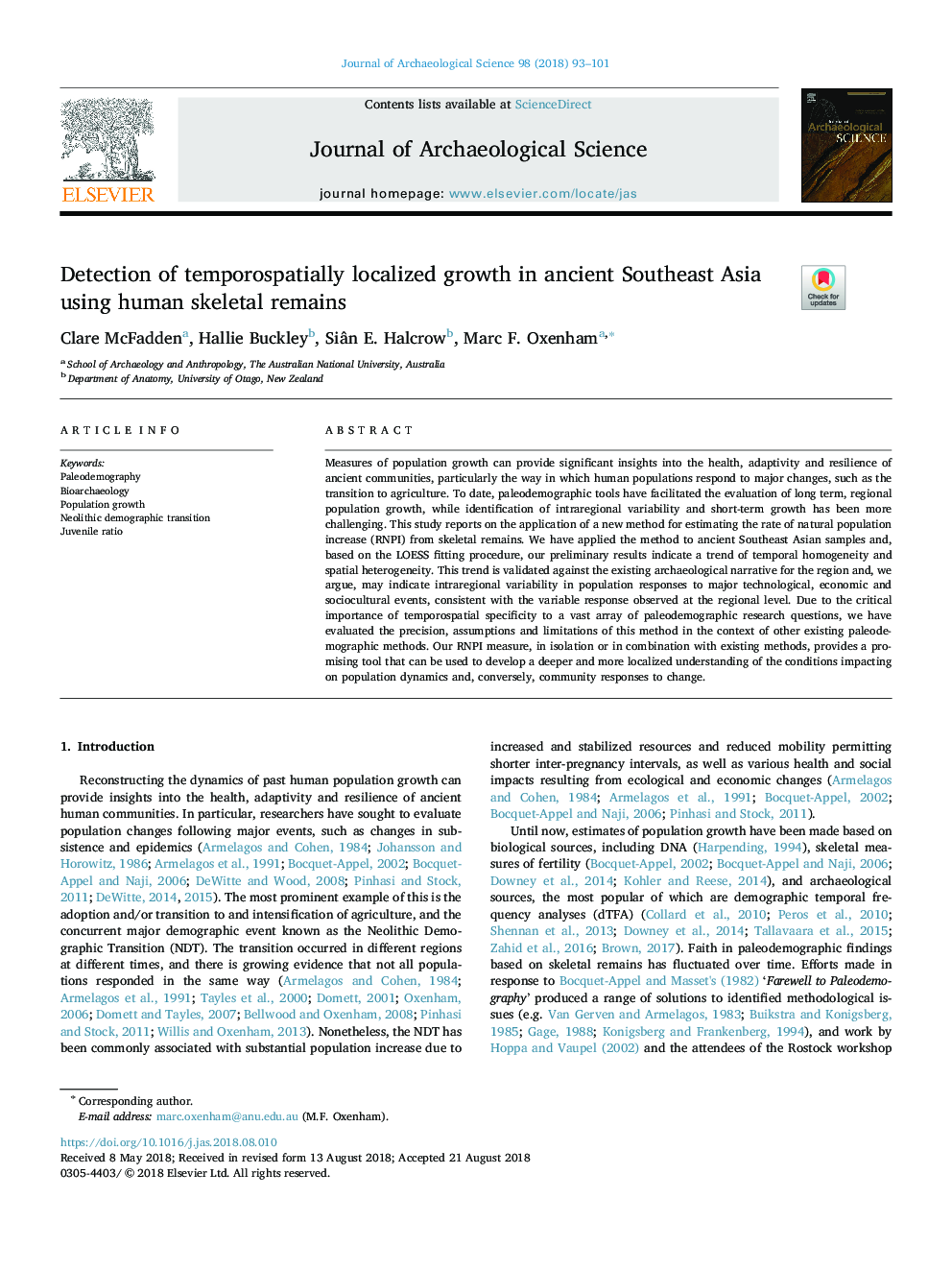| Article ID | Journal | Published Year | Pages | File Type |
|---|---|---|---|---|
| 9953162 | Journal of Archaeological Science | 2018 | 9 Pages |
Abstract
Measures of population growth can provide significant insights into the health, adaptivity and resilience of ancient communities, particularly the way in which human populations respond to major changes, such as the transition to agriculture. To date, paleodemographic tools have facilitated the evaluation of long term, regional population growth, while identification of intraregional variability and short-term growth has been more challenging. This study reports on the application of a new method for estimating the rate of natural population increase (RNPI) from skeletal remains. We have applied the method to ancient Southeast Asian samples and, based on the LOESS fitting procedure, our preliminary results indicate a trend of temporal homogeneity and spatial heterogeneity. This trend is validated against the existing archaeological narrative for the region and, we argue, may indicate intraregional variability in population responses to major technological, economic and sociocultural events, consistent with the variable response observed at the regional level. Due to the critical importance of temporospatial specificity to a vast array of paleodemographic research questions, we have evaluated the precision, assumptions and limitations of this method in the context of other existing paleodemographic methods. Our RNPI measure, in isolation or in combination with existing methods, provides a promising tool that can be used to develop a deeper and more localized understanding of the conditions impacting on population dynamics and, conversely, community responses to change.
Related Topics
Physical Sciences and Engineering
Materials Science
Materials Science (General)
Authors
Clare McFadden, Hallie Buckley, Siân E. Halcrow, Marc F. Oxenham,
